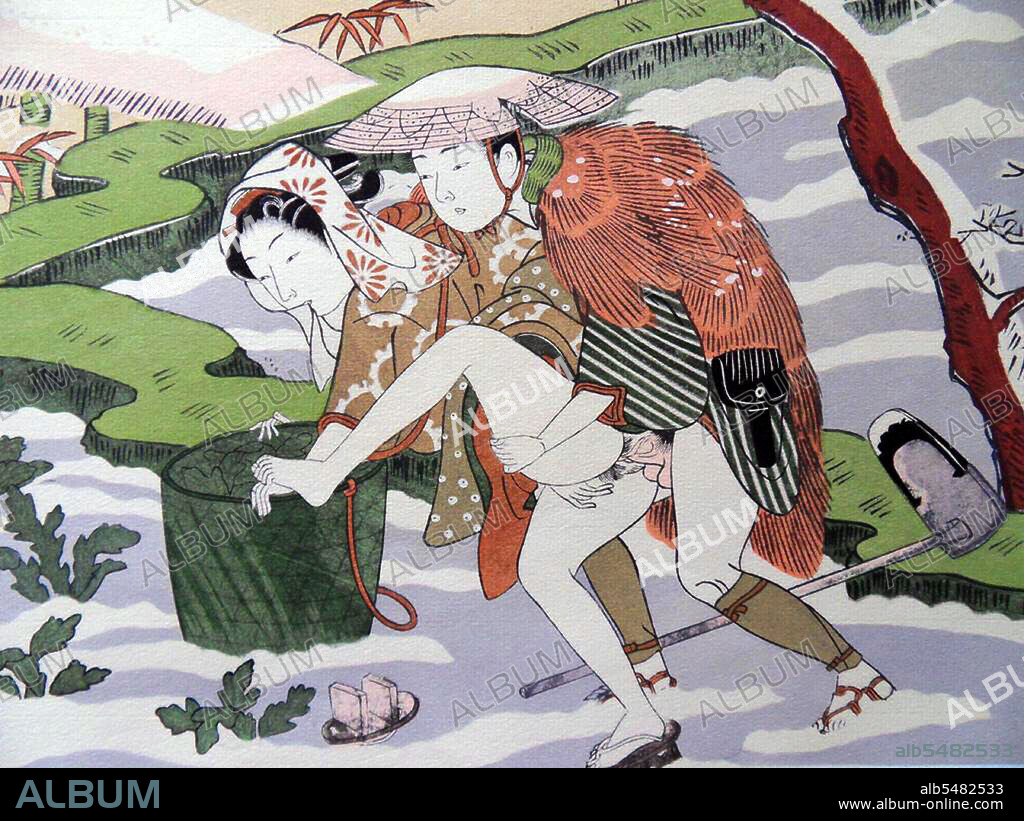alb5482533
A couple making love in the open countryside.

|
Add to another lightbox |
|
Add to another lightbox |



Title:
A couple making love in the open countryside.
Caption:
Shunga is a Japanese term for erotic art. Most shunga are a type of ukiyo-e, usually executed in woodblock print format. While rare, there are extant erotic painted handscrolls which predate the Ukiyo-e movement. Translated literally, the Japanese word shunga means picture of spring; 'spring' is a common euphemism for sex. The ukiyo-e movement as a whole sought to express an idealisation of contemporary urban life and appeal to the new chi nin class. Following the aesthetics of everyday life, Edo period shunga varied widely in its depictions of sexuality. As a subset of ukiyo-e it was enjoyed by all social groups in the Edo period, despite being out of favour with the shogunate. Suzuki Harunobu (1724 July 7, 1770) was a Japanese woodblock print artist, one of the most famous in the Ukiyo-e style. He was an innovator, the first to produce full-color prints (nishiki-e) in 1765, rendering obsolete the former modes of two- and three-color prints. Harunobu used many special techniques, and depicted a wide variety of subjects, from classical poems to contemporary beauties (bijin, bijin-ga). Like many artists of his day, Harunobu also produced a number of shunga, or erotic images.
Credit:
Album / Pictures From History/Universal Images Group
Releases:
Model: No - Property: No
Rights questions?
Rights questions?
Image size:
4800 x 3600 px | 49.4 MB
Print size:
40.6 x 30.5 cm | 16.0 x 12.0 in (300 dpi)
Keywords:
ART • ARTS • ASIA • ASIAN • EROTIC ART • EROTICISM • FASHION • HARUNOBU, SUZUKI • HISTORIA UNIVERSAL • HISTORICAL • HISTORY • HUMAN SEXUALITY • JAPAN • JAPANESE • LEGEND • MODA • NISHIKI-E • PAINT • PAINTING • SEX: EROTIC ART • SHUNGA • STYLE • UKIYO-E • WOMAN • WOMEN • WOODBLOCK
 Pinterest
Pinterest Twitter
Twitter Facebook
Facebook Copy link
Copy link Email
Email

